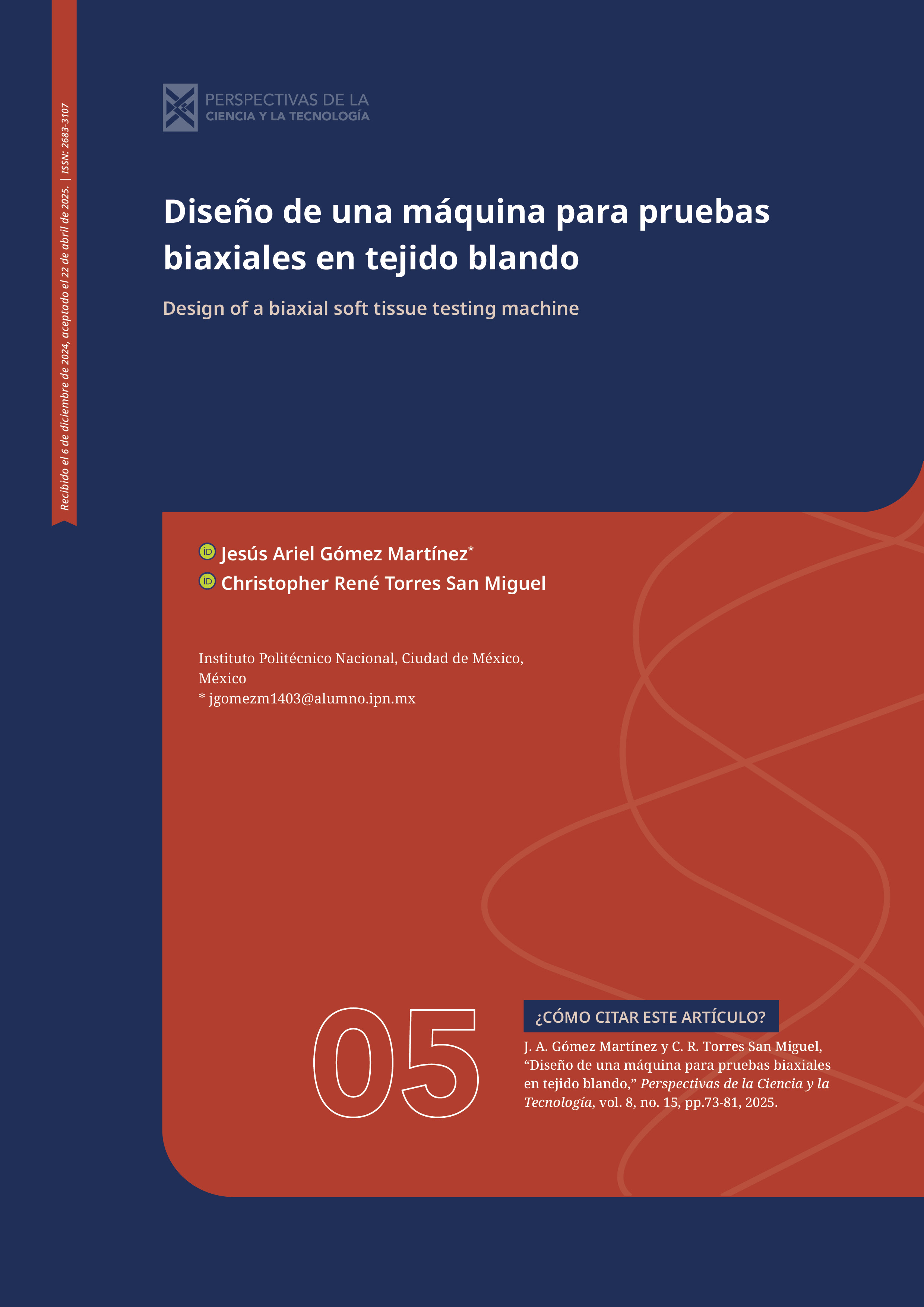Abstract
The design of a biaxial testing machine to evaluate the mechanical response of biological tissues under controlled tension in two perpendicular directions is presented. This type of testing is essential for determining the elastic constants of materials and for evaluating their anisotropic and orthotropic characteristics. However, the expense of commercial equipment often restricts its accessibility for laboratories whose financial resources are limited. The proposed design relies on both affordable and widely available components, including two-phase NEMA 23 servo motors and DYMH-103 load cells, attached on a perforated acrylic plate. The configuration of the servo motors enables the application of forces perpendicular to the specimen, while the rake clamping system distributes loads more effectively, thereby preventing damage to fragile tissues. The Arduino Mega 2560 board was complemented with TB6600 controllers and HX711 amplifiers to independently manipulate each axis. The design was later validated with the use of simulations in SolidWorks Premium 2022, employing finite element analysis (FEA) to identify critical stress zones and optimize the structure. The findings indicated that the load distribution was sufficient without surpassing the elastic limits of the material, thereby ensuring the safety and functionality of the device during operation. In summary, this design offers a compact, economical and versatile alternative for biomechanical studies.
References
D. Laurence, C. Ross, S. Jett, C. Johns, A. Echols, R. Baumwart, R. Towner, J. Liao, P. Bajona, Y. Wu y C.H. Lee, “An investigation of regional variations in the biaxial mechanical properties and stress relaxation behaviors of porcine atrioventricular heart valve leaflets”, Journal of Biomechanics, vol. 83, pp. 16–27, 2019, doi: 10.1016/j.jbiomech.2018.11.015
J. S. Welsh y D. F. Adams, “An experimental investigation of the biaxial strength of IM6/3501-6 carbon/epoxy cross-ply laminates using cruciform specimens”, Composites Part A: Applied Science and Manufacturing, vol. 33, núm. 6, pp. 829-839, 2002. doi: 10.1016/S1359-835X(01)00142-7
M. Cervera y E. Blanco, Resistencia de materiales. España: CIMNE, 2015.
M. Jiang, R. L. Sridhar, A. B. Robbins, A. D. Freed y M. R. Moreno, “A versatile biaxial testing platform for soft tissues”, Journal of the Mechanical Behavior of Biomedical Materials, vol. 114, art. 104144, 2021, doi: 10.1016/j. jmbbm.2020.104144
A. Corti, T. Shameen, S. Sharma, A. De Paolis, y L. Cardoso, “Biaxial testing system for characterization of mechanical and rupture properties of small samples”, HardwareX, vol. 12, art. e00333, 2022, doi: 10.1016/j.ohx.2022.e00333
CellScale Biomaterials Testing, “BioTester – Biaxial Test Machine. Fully equipped and optimized for biomaterials”. Cellscale.com. https://www.cellscale.com/products-cellscale%20biomaterials-testing/biotester/
SolidWorks Corporation, “La solución CAD 3D para el diseño y desarrollo de productos”. Solidworks.com https://www.solidworks.com/es
S. Iza, “Interpolación”. RPubs.com. https://rpubs.com/stanislao53/1060172

This work is licensed under a Creative Commons Attribution-NonCommercial-ShareAlike 4.0 International License.
Copyright (c) 2025 Perspectivas de la Ciencia y la Tecnología


